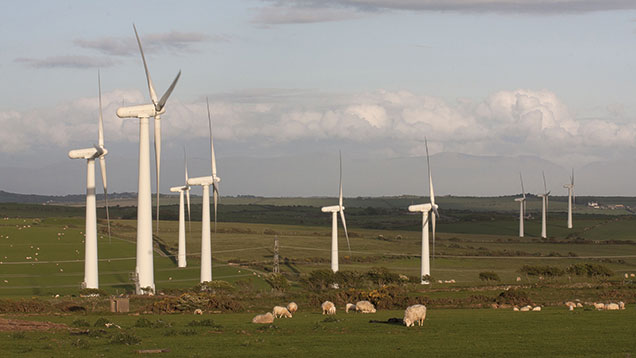Support confusion creates wind farm investment worries
 © FLPA/Rex
© FLPA/Rex There is mounting frustration and unease across the onshore wind sector due to uncertainty about future support under the new government.
Tory pledges to “halt the spread of onshore wind farms” by ending subsidies for new projects and giving local people more power over windfarm applications left many in the industry fearing the worst and have done little for investor confidence.
At the time of writing, it was unclear what constituted a wind farm in policy terms, which subsidies would be ended and when reforms would happen, with the Department of Energy & Climate Change (DECC) refusing to clarify details. While the outline of legislation is expected in the Queen’s speech on Wednesday (27 May), this is not expected to define turbine numbers or sizes.
See also: Learn about generating wind power with Farmers Weekly’s academy
There is speculation that Renewables Obligation Certificates (ROCs) for onshore wind could be ended a year before the scheduled 2017 closure, additional restrictions could be placed on Contracts for Difference and Feed-in Tariffs could be cut or removed entirely.
“Politically they [the Tories] have committed to ending subsidies [for onshore wind farms] in their manifesto, so it will be difficult to row back on that,” said Robert Norris of RenewableUK, which represents the on and offshore wind energy generation sector.
He suggested the government could have decided to end support after assuming that all consented projects already in the pipeline would be enough to supply around 10% of electricity – the aim proposed by the previous government to help meet the EU’s 2020 renewable energy target.
However, the sector currently supplied just 5% of electricity and not all proposed projects would get built, he said.
“We’ve got to make sure there’s enough in the pipeline to at least meet the 2020 target, but there may well be the need for more electricity from onshore wind to make up any shortfall that would occur if the expected progress isn’t made in other sectors, such as transport and heat.”
Scotland’s first minister Nicola Sturgeon called for assurances from Westminster that no changes would be made to onshore wind subsidies without agreement from Scottish ministers. Onshore wind generated almost two-thirds of all renewable electricity output in Scotland last year.
But it is not just large wind farms that face an uncertain future. Mike Reid from CKD Galbraith predicted that in two to three years’ time, further cuts to FiTs support meant it would be difficult to financially justify installation of single smaller turbines (eg 500kW) unless there was a significant increase in productivity or drop in installation costs.
“There will still be projects that can go ahead without support, but much fewer of them. Considering the lead-in time for a 500kW turbine can be a couple of years, there’s a lot of risk to take on for potentially limited return.”
Future wind projects were likely to be more tailored to meeting on-site energy demand, rather than being scaled towards maximising subsidy income or electricity export, he added.
The NFU’s Jonathan Scurlock reiterated pre-election calls for more consistency in low-carbon energy policy across incentives, planning, grid access and to establish with industry a land-based renewable energy strategy involving anaerobic digestion, biofuels, biomass, by-products, solar and wind.
